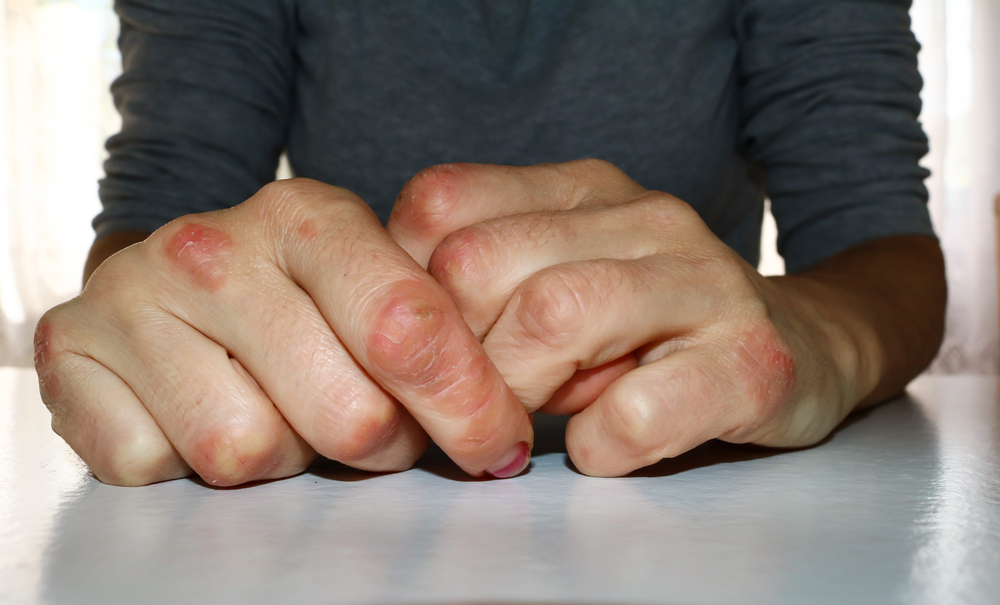Dr. Ted Rosen details the FDA’s recent approval of roflumilast cream 0.3% for treatment of plaque psoriasis, including intertriginous psoriasis.
By Ted Rosen, MD, FAAD
Editor-in-Chief
On July 29, 2022, the FDA approved roflumilast cream 0.3% (Zoryve, Arcutis Biotherapeutics) for the treatment of plaque psoriasis, including intertriginous psoriasis, in adults and adolescents 12 years of age and older.
This drug is therefore unique as the first topical selective phosphodiesterase 4 (PDE4) inhibitor approved for psoriasis. As a nonsteroidal agent, it avoids most of the well-known complications of prolonged topical steroid use. Thus, it is especially attractive for use in areas such as the axilla and inframammary skin in order to prevent atrophy.
Interestingly, strictly as a PDE4 inhibitor, roflumilast is several hundred-fold more potent than apremilast (Otezla, Amgen).
This recent approval was based on two parallel randomized, double-blind, vehicle-controlled phase 3 pivotal trials: Dermis-1 (NCT 04211363) and Dermis-2 (NCT 04211389). Patients were eligible if they had at least mild psoriasis involving 2% to 20% body surface area (BSA).
Roflumilast 0.3% cream or vehicle was applied once daily for 8 weeks.
The primary endpoint was Investigator Global Assessment (IGA) success (clear or almost clear with a 2-grade improvement compared to baseline) at end of study. Secondary endpoints of note included IGA success specifically at intertriginous sites and itch reduction (using worst itch numerical rating score, or WI-NRS). The goal was to decrease WI-NRS by at least 4 points.
At the conclusion of the 8-week trial period, active drug achieved IGA success in 36.7% to 41.5% of patients, while vehicle achieved IGA success in only 5.8% to 7.1%. This difference was clearly statistically significant.
In intertriginous sites, roflumilast was statistically superior to vehicle at all visits (2, 4, 6, and 8 weeks). At the end of the study, roflumilast achieved IGA success in these sensitive, hard-to-treat sites in 67.5% to 71.5% of those treated; vehicle achieved IGA success in only 13.8% to 17.4% of subjects.
At 4, 6, and 8 weeks in both pivotal phase 3 studies, topical roflumilast was statistically superior to vehicle in achieving the goal of itch reduction. At study’s end, 67% to 69% of subjects achieved a WI-NRS reduction of at least 4 points; vehicle achieved this secondary endpoint in 26% to 33%.
This new topical is very well tolerated. Adverse events were in the low single digit percentile among subjects treated with both active and vehicle. Among roflumilast recipients, diarrhea was reported in 3% and headache in 2%. Only 1% of subjects reported a variety of other potential adverse effects: insomnia, nausea, application-site pain, and upper respiratory, and urinary tract infections.
By blocking PDE4, roflumilast presumably works by decreasing inflammatory mediator production. The commercial product should be available by the time this review is published. Other formulations are in development, such as a roflumilast foam product for scalp psoriasis.
Suggested Reading:
Lebwohl MG, Papp KA, Stein Gold L, et al; ARQ-151 201 Study Investigators. Trial of Roflumilast Cream for Chronic Plaque Psoriasis. N Engl J Med. 2020 Jul 16;383(3):229-239. doi: 10.1056/NEJMoa2000073. PMID: 32668113.


